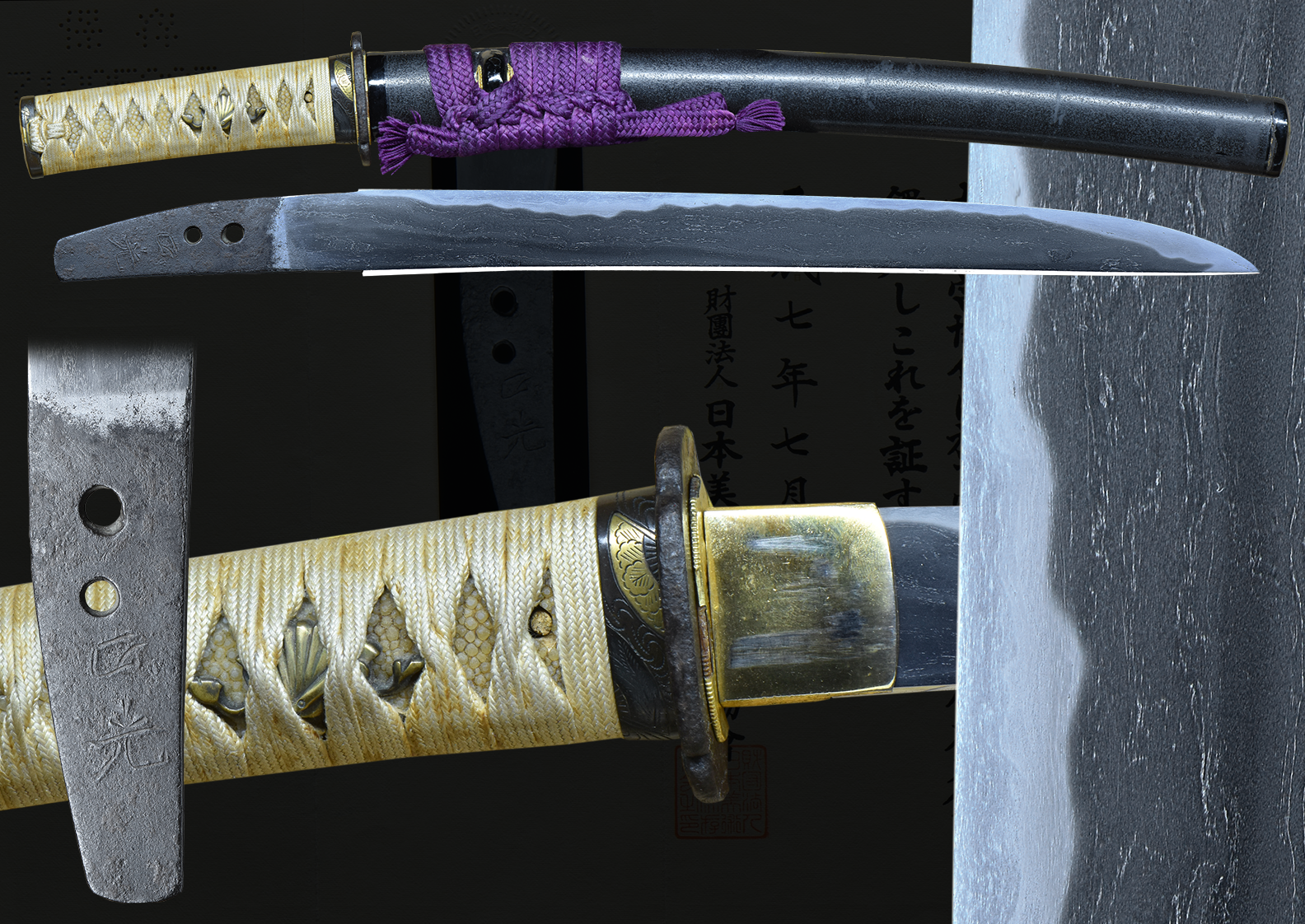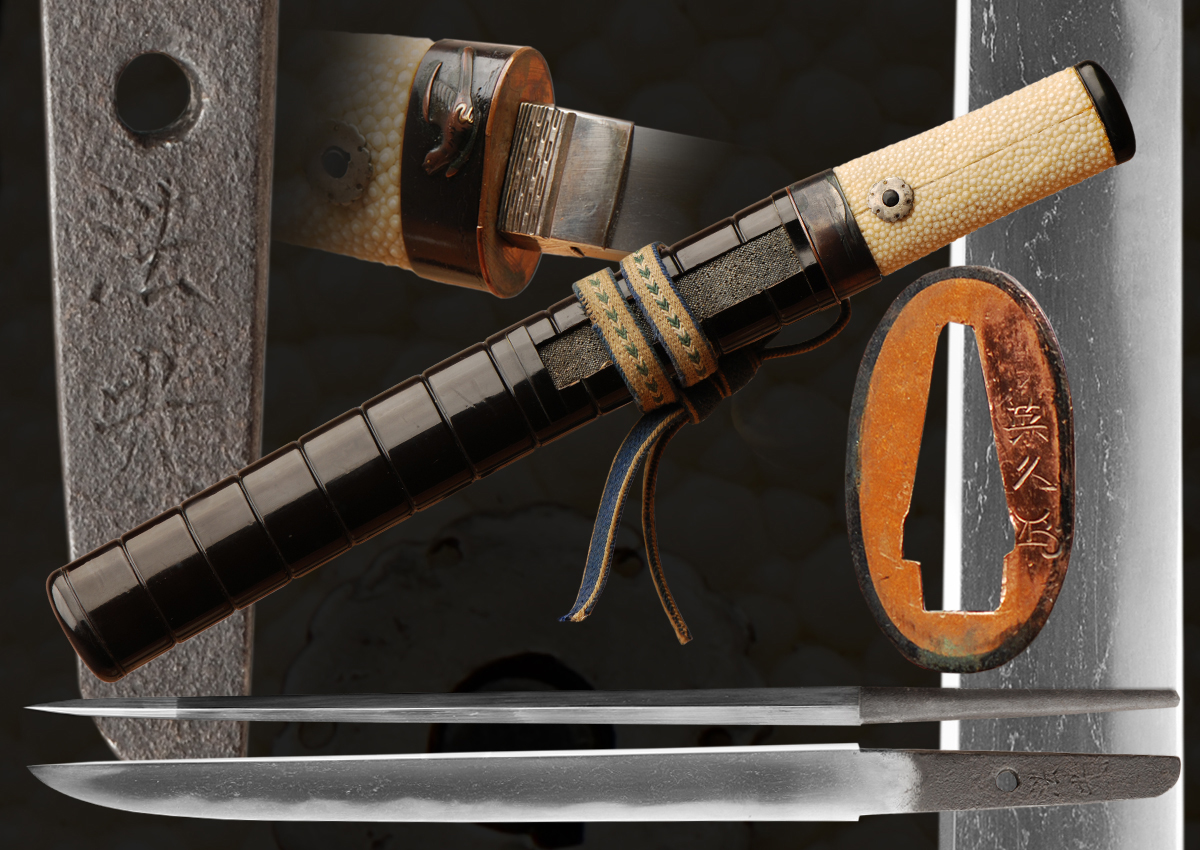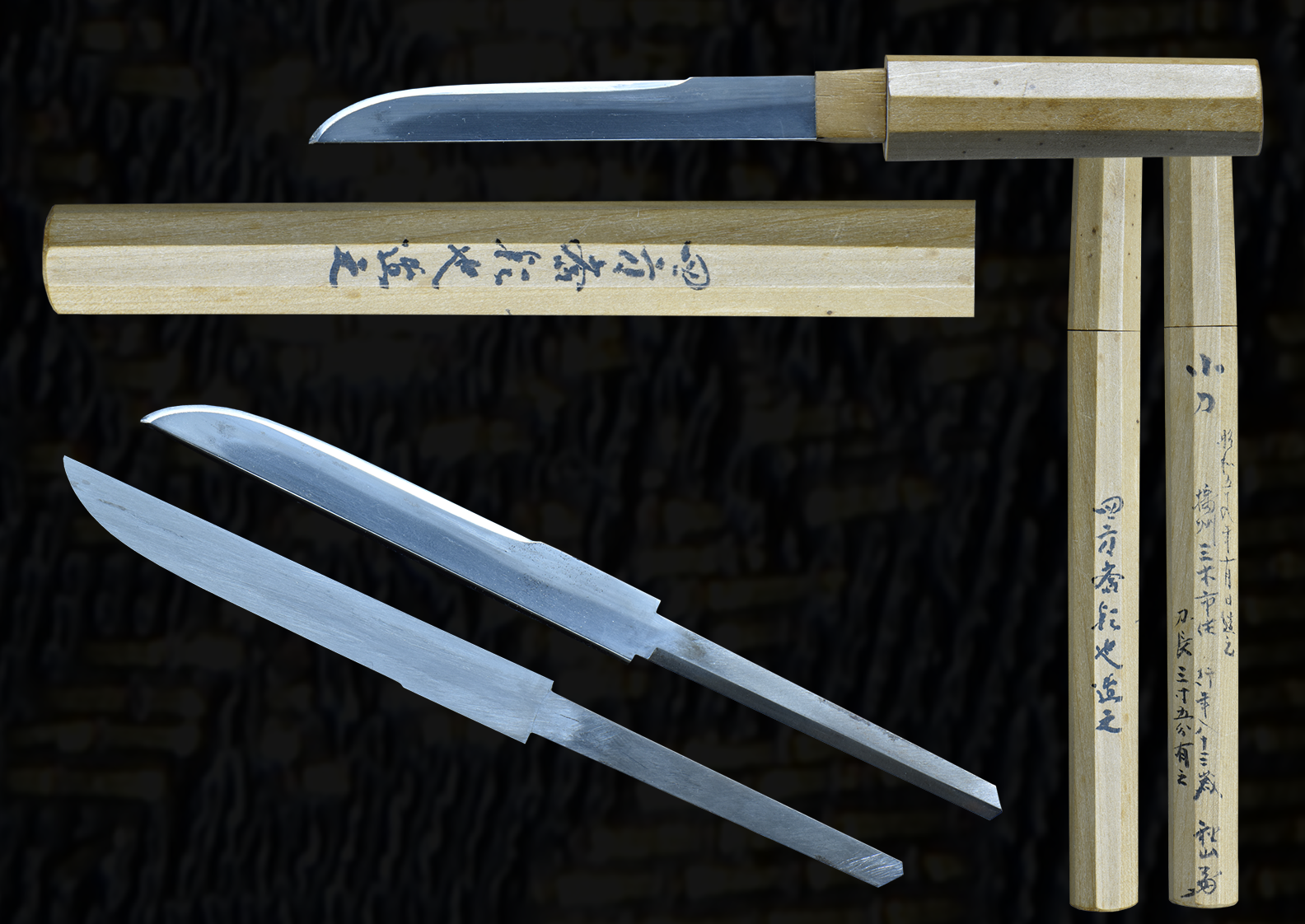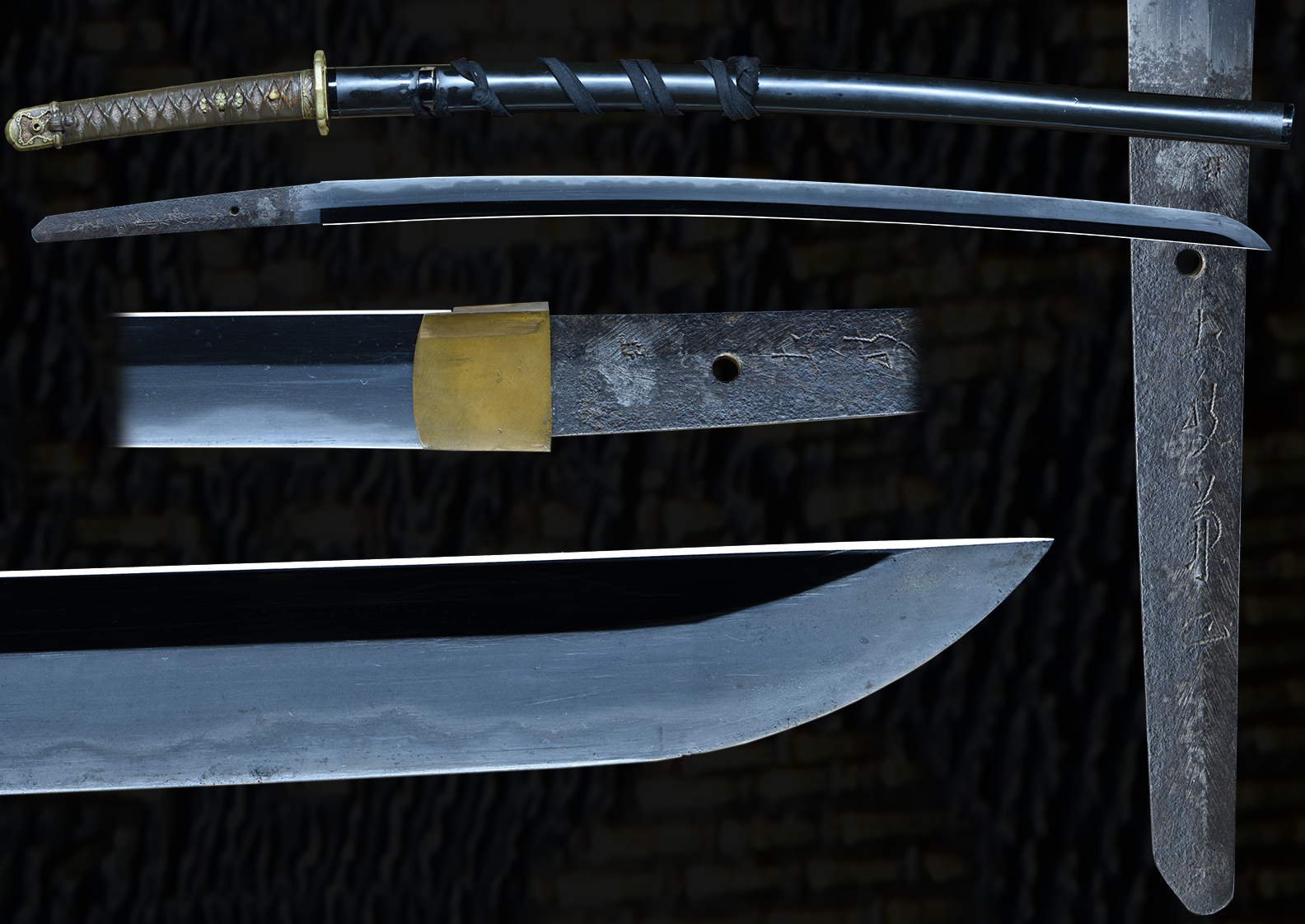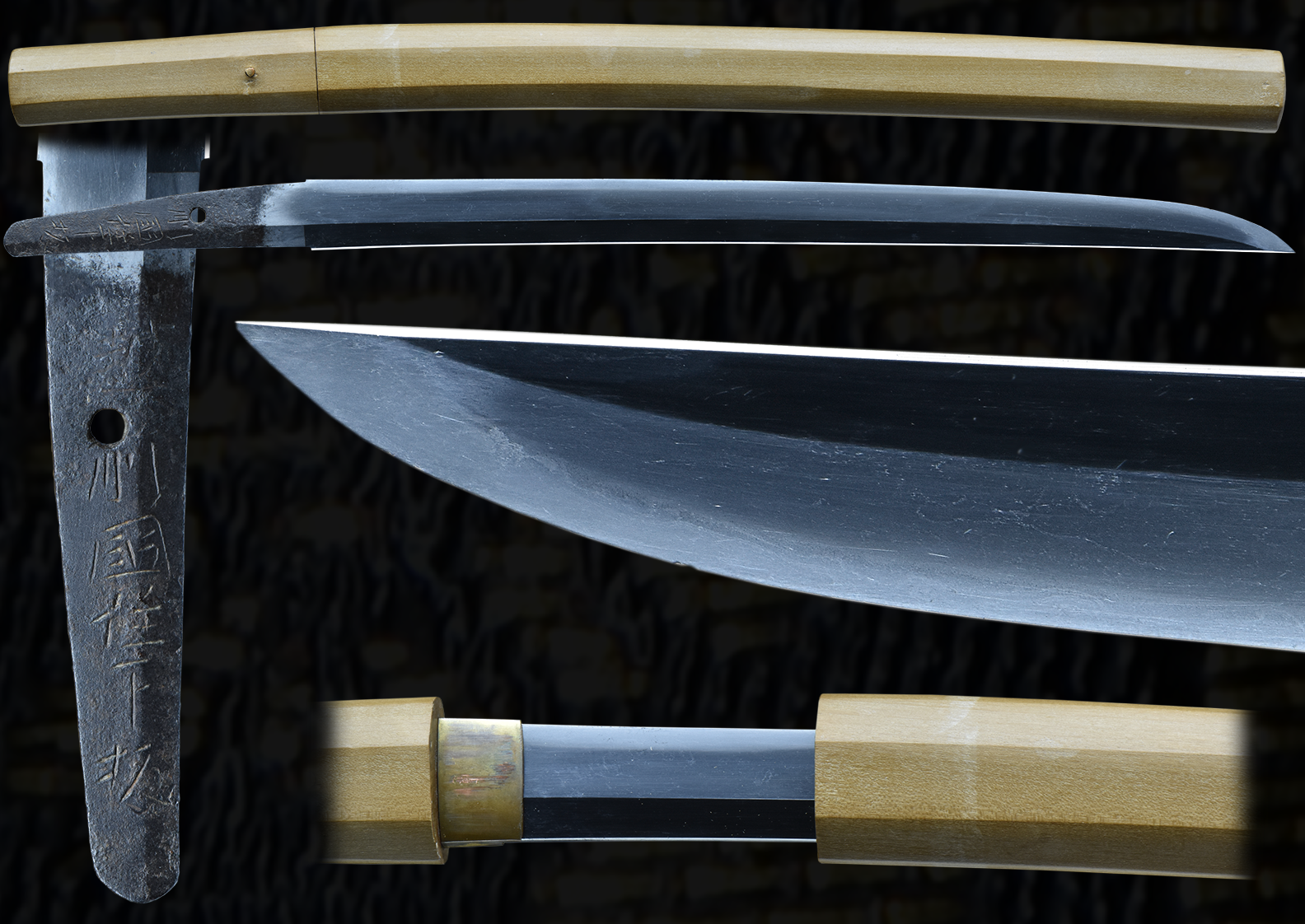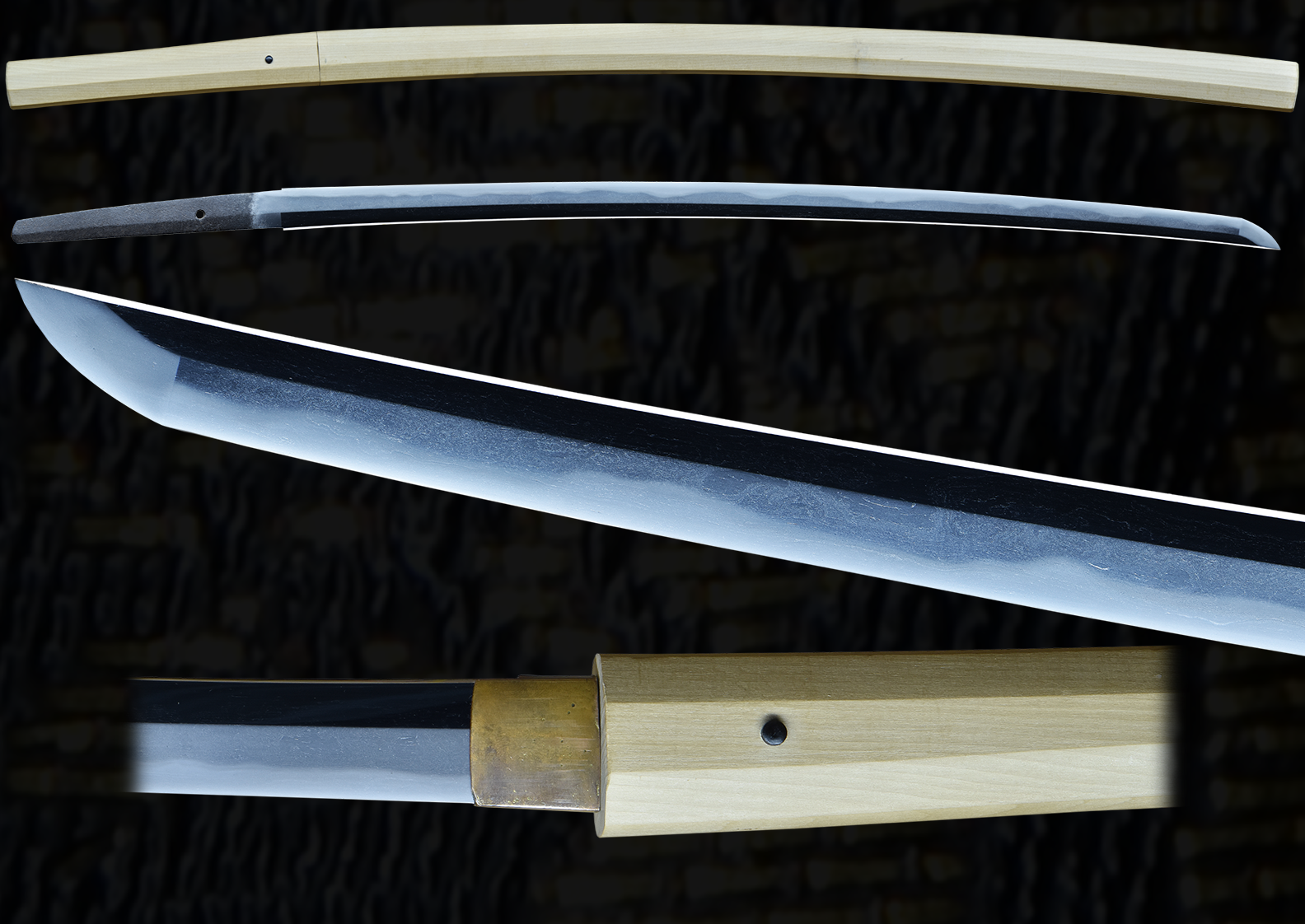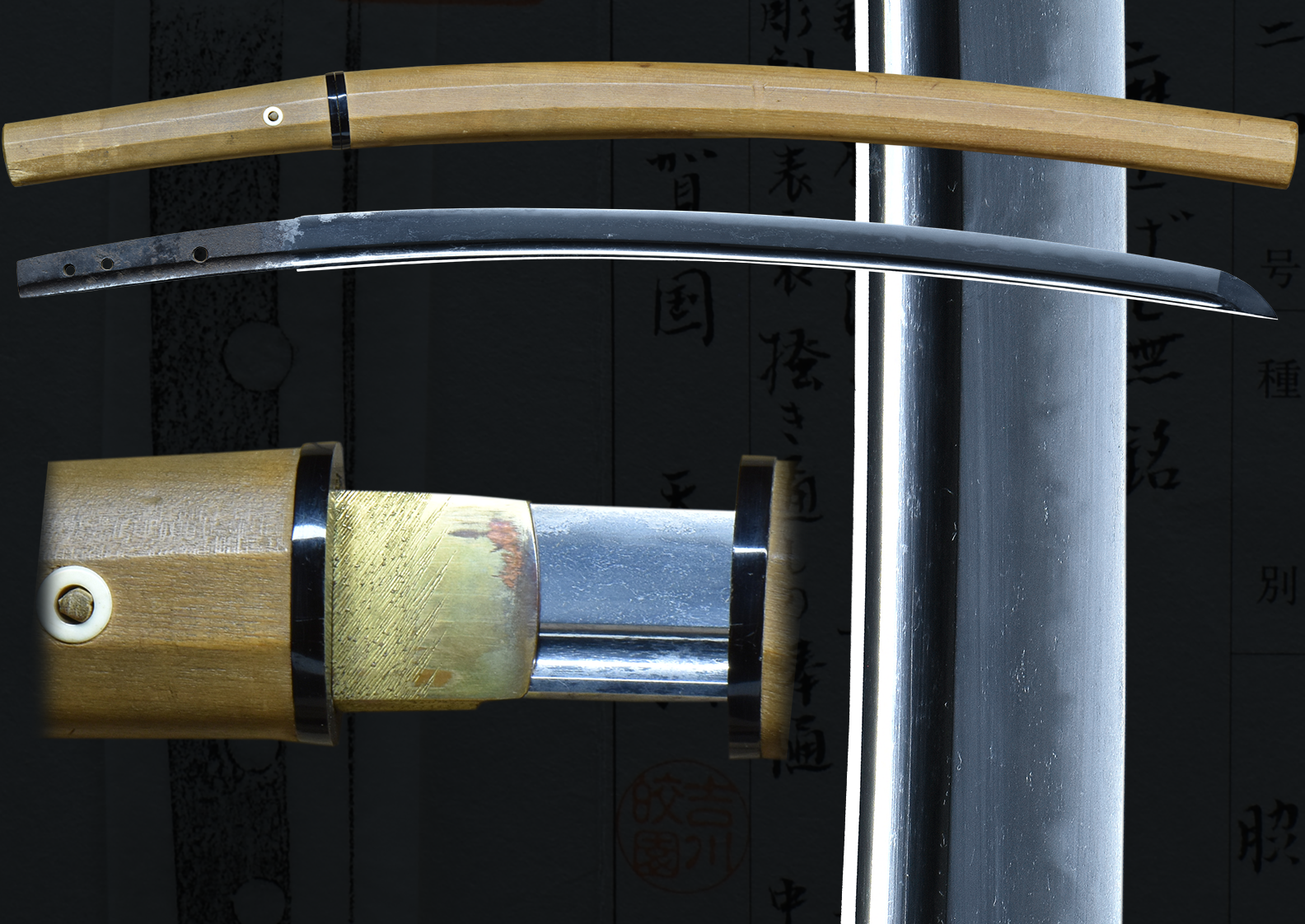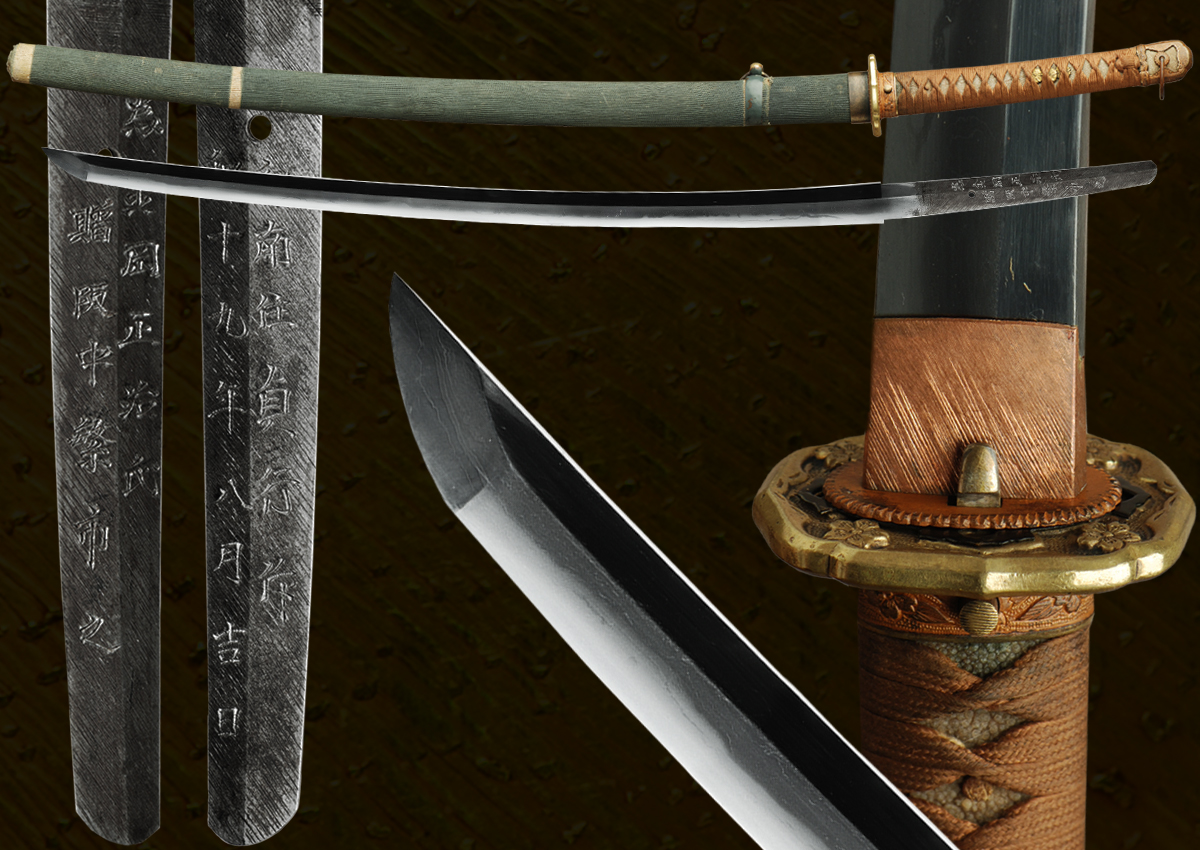Info on the Mei/Signature:
紀南住貞行作
昭和十九年八月吉日
Kinan-jû Sadayuki saku
Shôwa jûkunen hachigatsu kichijitsu (“on a lucky day in August 1944”)
為金岡正治氏
贈阪中繁市之
Kaneoka Shôji-shi no tame (“for Mr. Kaneoka Shôji”)
Sakanaka Shigeichi kore o okuru (“as a present for Sakanaka Shigeichi”)
We could not find anything about Kaneoka Shôji (please note: alternative name readings possible) we found out that Sakanaka Shigeichi was from July 1950 to April 1951 vice-chairman of the Ôsaka City Council.
Info on the smith:
SADAYUKI (貞行), Shōwa (昭和, 1926-1989), Wakayama – “Ryūjin Tarō Minamoto Sadayuki” (龍神太郎源貞行), “Nanki Ryūjin ni oite Minamoto Sadayuki kore o tsukuru” (於南紀龍神源貞行造之), real name Adachi Sadakusu (安達貞楠), born March 28th 1909, he studied under Kawano Sadashige (川野貞重) and worked as kaigun-jumei-tōshō, he lived in Wakayama´s Ryūjinmura (龍神村), his nickname Ryūjin Tarō (龍神太郎) alludes to the local context.
This is a very good quality gendaito that is handmade by Sadayuki. It is a signed and dated katana that shows quality work in the blade. The hamon is midare with many hataraki. The hamon is nie/nioi mixed and has an elegant feel to it. The hada is also well forged and has a even and has a milky appearance to it with solid fine activity. The showa era produced many swordsmiths that produced many different qualities of katana for the war effort. Most swords that were war made were military swords and were mass-produced. They were tempered in oil and not forged traditionally. These swords are commonly sold in military mounts like this sword. The difference is that this sword is made in the older traditional fashion. In the showa era or lets say during WWII there were a few traditional smiths that were producing hand forged traditional swords for higher ranked officers and more important individuals that wanted higher quality swords. These swords were hand forged using traditional tamahagane steel and tempered in water not oil. Oil is safer and easier than water to temper swords. Tempering a sword in water requires much more skill and knowledge. This is a what makes this sword different from a mass produced sword from the showa era. Also, the mounts on this sword are interesting and the tsuba/guard is accompanied by a green form of saya not to be found that often but missing a band and end piece. This is a very high quality WWII hand forged katana.
(Please note: the word “tempering is not really the proper term for the heat treatment process required to create the hamon. But many people use the word “tempering” so as to not confuse people we are using it also to describe the way a swords hamon is made.)
This sword also has the record of who this was made for and presented by which adds to the collectability and value of the sword.
- Mei: 紀南住貞行作 Kinan-jû Sadayuki saku為金岡正治氏
贈阪中繁市之
Kaneoka Shôji-shi no tame (“for Mr. Kaneoka Shôji”)
Sakanaka Shigeichi kore o okuru (“as a present for Sakanaka Shigeichi”) - Date: 昭和十九年八月吉日 Shôwa jûkunen hachigatsu kichijitsu (“on a lucky day in August 1944”)
- Nagasa: 25-1/2 inches
- Sori: 18.0 mm
- Width at the ha-machi: 32.6 mm
- Width at the yokote: 22.9 mm
- Thickness at the mune-machi: 7.5 mm
- Construction: Shinogi zukuri
- Mune: Iori
- Nakago: Ubu
- Kitae: Itame
- Hamon: Midare Gunome
- Boshi: Maru
- Condition: Older polish
Email us if your interested in this item and remember to include the order number for this item: fss-728.
For Sale
